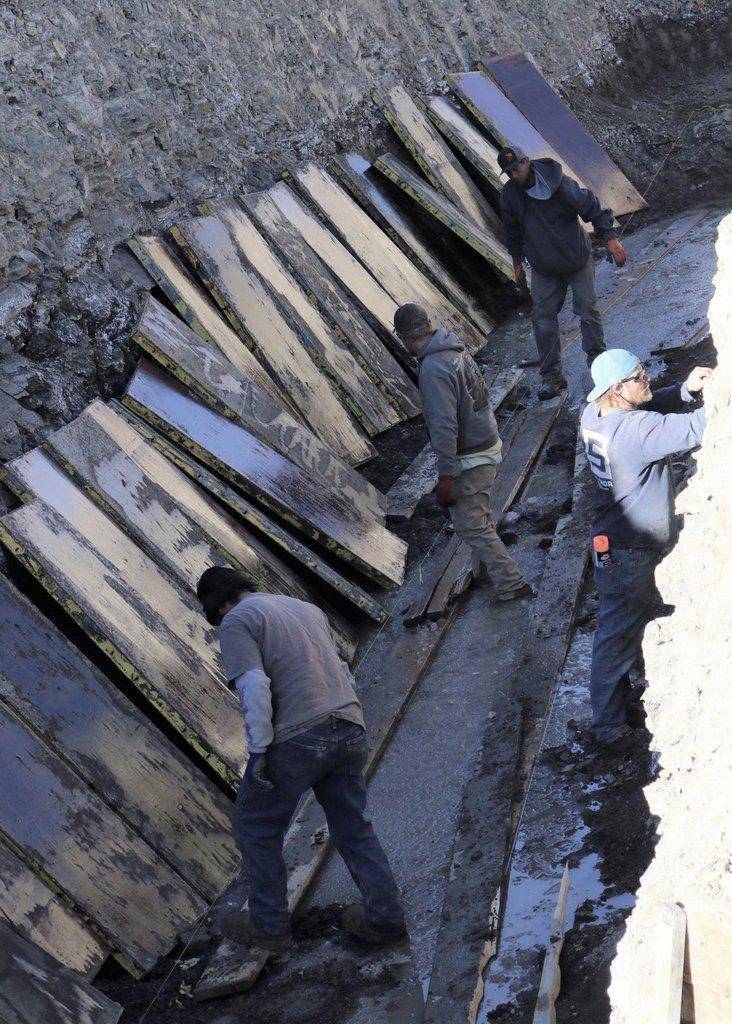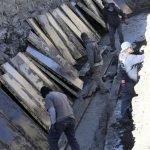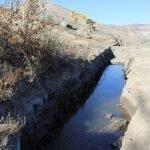Carbon School District Press Release
The long time realization of a dream is finally taking shape east of Carbon High School as the long-awaited baseball fields are under construction and moving ahead on schedule.
The project, which moved from being only a vision to a reality when Price City stepped up to the plate and worked with Carbon School District in a partnership move, will be done this spring. But, because of the nature of providing the best playing surface possible, play will not begin on the new grass until the spring of 2020.
Last spring, the Utah Permanent Community Impact Board (CIB) provided Price City enough money in half grant and half loan to build the fields. A total of $3.1 million was awarded to the city for the fields. In the last year, the city has worked with the school district on an agreement to share the fields for the betterment of the community. The school district has put in $1.25 million to help pay for the construction. The city will use that money to pay the loan portion of the award.
The project will give the area two very impressive and functional fields to not only have high school games played on them, but also tournaments throughout the summers.
“Every week, we have a meeting with the contractors,” said Miles Nelson, the Public Works Director for Price City. “We always talk about progress and the substantial completion date at this point is March 21. Final completion will be April 12.”
Nelson said that while the field could be ready to be played on this summer, the general feeling is that use of the field too early could cause problems and moving the date of use to next year seems to be the consensus.
Kerry Jensen, the Facilities Director for Carbon School District, said that the “district would like to christen the field” and that they “want to be sure the grass is well anchored.” He noted that the decision to wait to play on the field until the spring of 2020 is largely by request of the high school.
The major earth work on the field was done in mid-December and the crews put in a retaining wall to keep the hill above the field from moving down, said Price City Engineer Russell Seeley. Top soil is continually being brought in to put on the playing surface for the sod to sit on when it is installed. That dirt is being brought in from Miller Creek and other organic material will be mixed with it as things progress.
There are two fields planned for the complex and they are very nearly equal in size. Both have center fields of 390 feet. The two baseball fields are replacing the old field and a softball field that was just north of it. The high school’s softball coaches said they want to play on Carbon County’s fields adjacent to the fairgrounds, so this change is not a problem, and actually a plus in many ways.
“The original plans were to make it into one large baseball field and then a smaller field, but as we worked with it we were able to build two equal-sized fields,” said Jensen.
Nelson said that the two fields are critical for the city because if they want to bring in tournaments, it will be advantageous to have the two baseball fields that are the right size for that type of event.
Once the fields are done (and they have been used by the high school for a season), they will be restricted to limited use, so that the venues are not damaged or overused. Other than the high school, there will be no practicing allowed on the fields.
The old field had drainage problems because of ground water from various sources, including what ran down toward the field from the Dino football field above it. When the last field was constructed, the water was run into the field for drainage. Now, there is extensive work being done to make sure the water runs out into Mead’s Wash.
“The drain will run behind the retaining wall we are putting in and that will go into the wash,” said Seeley.
Jensen said much of the drainage problem actually resulted from the fact that the old French drain that was not installed deep enough (it was put in laying on top of shale), so it never worked correctly.
“They are going to go down a couple of feet more with the drain line,” he said.
Even with the problems with the shale (which required some blasting work in the fall), the budget is right on target for the complex and Seeley said that there will be a good-sized concession stand and restrooms in the complex that should please a lot of people.
The old field had a wooden concession stand and the bathrooms consisted of portable toilets that were brought in, so the new facilities will be a welcome addition. The amount of seating for each field will be similar to what was available on the old field, but Seeley noted that there is plenty of room to put in more seating if it is ever needed.
“Some of the best seating will be by the walls that are being put in,” said Jensen. “People will be able to bring their lawn chairs and sit there and have a great view of things.”
Some have also wondered about the grass on the field, and officials looked at artificial turf but it was too expensive for the money that was available.
“That type of turf would have doubled the cost of the project,” stated Seeley.
There will eventually be paved parking at the north end of the complex, which will be put in after everything else is done, and some of the parking that was there before the construction on the south side of the fields will still be available, but it will be a dirt and gravel lot for the foreseeable future.



